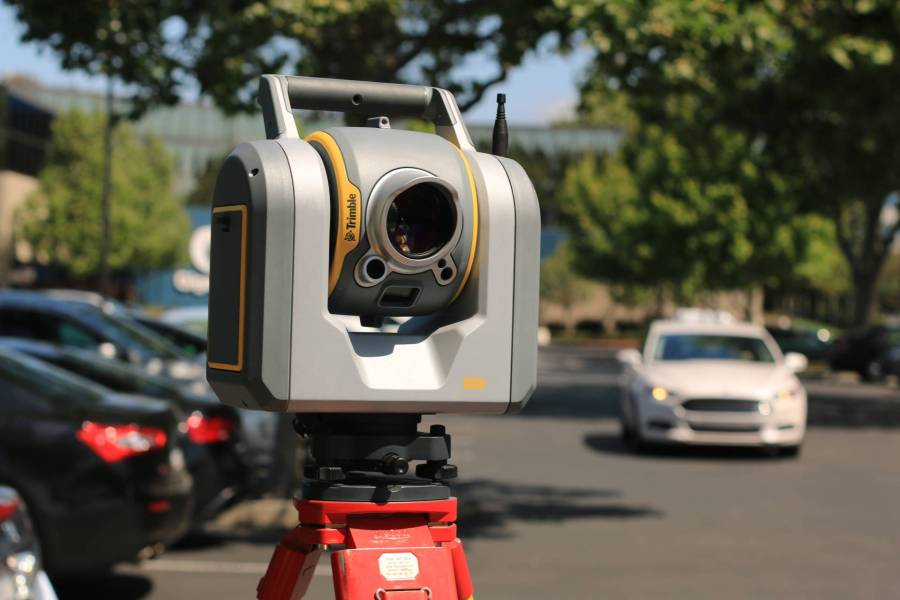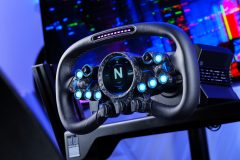LiDAR technology has a rich history spanning over half a century. Similar to radar, LiDAR utilizes laser beams to scan an area and measures the reflected signals to create a 3D image of the surroundings. However, traditional LiDAR systems have relied on moving parts, which add complexity, weight, and cost. The development of LiDAR technology without moving parts has been a long-standing goal for researchers.
In a recent research study published in the journal Nature, the University of Washington’s Electrical and Computer Engineering (ECE) research team introduced a groundbreaking approach to LiDAR technology. Led by Professor Mo Li, the team developed LiDAR on a chip that utilizes quantum effects to steer the laser beam without the need for any moving parts.
The key innovation lies in the integration of a laser beam-steering device onto a computer chip. This device, using sound waves running over its surface, controls the direction of the laser beam. The chip essentially acts as a searchlight, enabling self-driving cars and other devices to “see” objects in the distance. Unlike traditional LiDAR systems, this chip-based LiDAR technology is lightweight, compact, and cost-effective.
LiDAR on a chip utilizes a concept called “acousto-optic beam steering” to control the direction of the laser beam. The chip generates high-frequency sound pulses, well beyond the audible range, which create quantum quasi-particles called phonons. These phonons alter the deflection of the photons, bending the laser beam similarly to a prism.
The light beam emitted by the chip passes just above its surface, ensuring safety for the eyes. Simultaneously, an interdigital transducer (IDT) excites acoustic waves on the chip, which “steer” the beam back and forth based on their frequencies. This movement occurs either continuously or in steps, allowing the beam to scan the environment.
The laser beam reflects off objects in the surroundings and returns to the LiDAR, where a detector receives the beam. Software then interprets the information, constructing a 3D image of the reflected object. The chip’s ability to detect and image objects in three dimensions from over 100 meters away opens up a world of possibilities for various industries.
The development of LiDAR on a chip brings several advantages and potential applications to the table. Firstly, the elimination of moving parts reduces complexity, weight, and cost, making LiDAR technology more accessible for a wide range of industries. The compact size and affordability of chip-based LiDAR enable its integration into autonomous vehicles, drones, robotics, and medical imaging devices.
Autonomous vehicles have been a hot topic in recent years, with numerous companies investing in self-driving technology. LiDAR plays a crucial role in enabling these vehicles to perceive and navigate their surroundings. While there has been debate about the necessity of LiDAR in self-driving cars, the development of a smaller, cheaper LiDAR on a chip could potentially change the game. The reduced weight and cost of the chip-based LiDAR make it a viable option for autonomous vehicles, enhancing their perception capabilities and ensuring safer navigation.
Drones are widely used for various purposes, including aerial photography, delivery services, and surveillance. LiDAR technology has the potential to revolutionize the capabilities of drones by enabling them to accurately detect and avoid obstacles in real-time. The smaller form factor of LiDAR on a chip makes it ideal for integration into drones, enhancing their autonomy and safety.
The field of robotics can greatly benefit from the advancements in LiDAR technology. With the integration of LiDAR on a chip, robots can navigate complex environments more efficiently and accurately. Warehouse automation, military robots, and industrial robotics can all leverage the compact and cost-effective LiDAR technology to enhance their capabilities, leading to increased productivity and safety.
LiDAR on a chip offers unique opportunities in the field of medical imaging. Traditional medical imaging techniques often require large and expensive equipment. The compact and affordable nature of chip-based LiDAR opens up possibilities for portable medical imaging devices, enabling medical professionals to conduct imaging procedures in various settings. This advancement could improve accessibility to medical imaging technology and enhance patient care.
While the development of LiDAR on a chip is a significant breakthrough, there are still some limitations that need to be addressed. The current range of the chip-based LiDAR is approximately 110 meters, which falls short of the range required for autonomous vehicles traveling at highway speeds. The efficiency of the system is another challenge, with the current efficiency standing at around five percent.
However, the researchers are optimistic about the future of chip-based LiDAR technology. They believe that with further advancements, they can achieve the desired range and efficiency. The goal is to reach 50% efficiency, enabling a range of 300 meters, which would provide sufficient time for autonomous vehicles to respond to objects and situations in their path.
The development of LiDAR on a chip has significant commercial potential. Professor Mo Li and Bingzhao Li, along with their team, plan to form a startup company to commercialize their technology within the next few years. They have already received seed grants from CoMotion, the startup incubator at the University of Washington, and the Washington Research Foundation.
The commercial applications of chip-based LiDAR extend beyond autonomous vehicles. Its reduced size and lack of moving parts make it suitable for various industries, including drones, robotics, and medical imaging. The cost-effectiveness and accessibility of the technology can drive innovation and create new opportunities in these sectors.
The development of LiDAR on a chip by the University of Washington researchers marks a significant milestone in the evolution of LiDAR technology. The integration of quantum effects onto a computer chip eliminates the need for moving parts, making LiDAR more compact, affordable, and versatile. The chip-based LiDAR has the potential to revolutionize industries such as autonomous vehicles, drones, robotics, and medical imaging. While there are still challenges to overcome, the future looks promising for chip-based LiDAR, opening up new avenues for innovation and advancement.
First reported on GeekWire


















